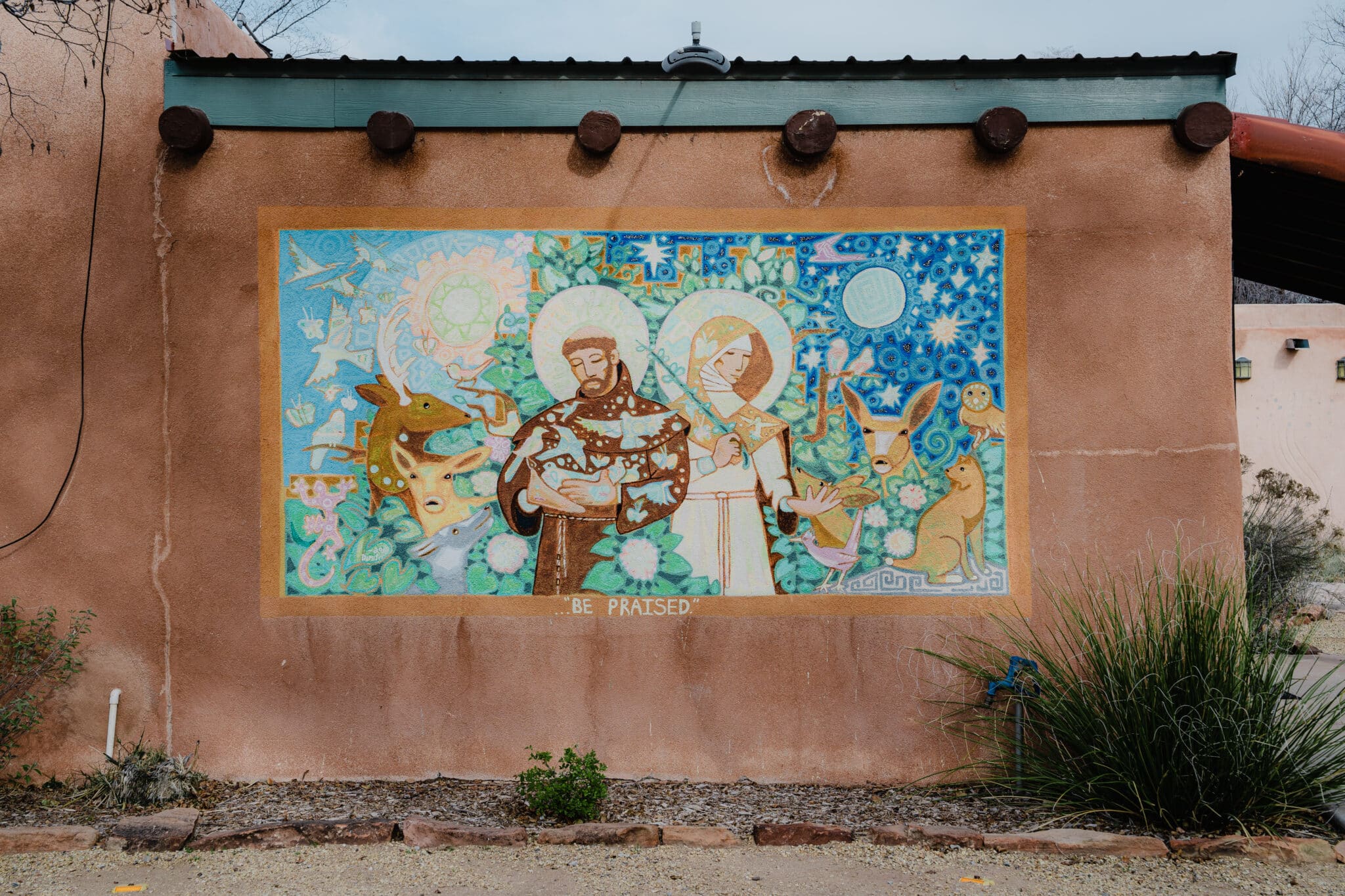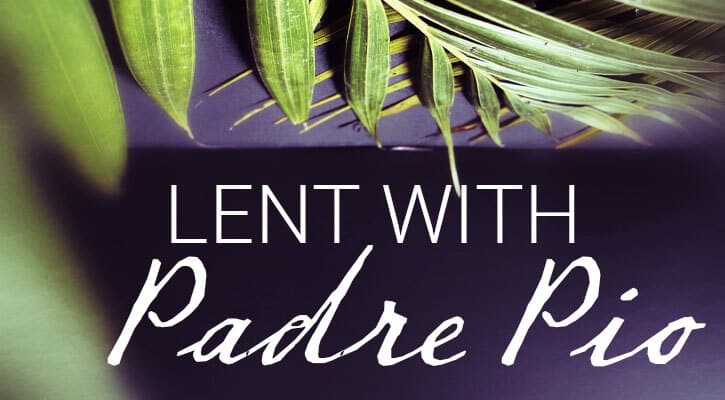Yearning for a new way will not produce it.
Only ending the old way can do that.
You cannot hold onto the old, all the while declaring that
you want something new.
The old will defy the new;
The old will deny the new;
The old will decry the new.
There is only one way to bring in the new.
You must make room for it.
—Neale Donald Walsch—
Francis of Assisi was a master of making room for the new and letting go of that which was tired or empty. As his first biographer said, “He was always new, always fresh, always beginning again.” Much of Francis’ genius was that he was ready for absolute “newness” from God, and therefore could also trust fresh and new attitudes in himself. His God was not tired, and so he was never tired. His God was not old, so Francis remained forever young. There are always new vocabularies, fresh symbols, new frames and styles, but Francis must have known, at least intuitively, that there is only one enduring spiritual insight and everything else follows from it: The visible world is an active doorway to the invisible world, and the invisible world is much larger than the visible.
I would call this mystical insight “the mystery of incarnation,” or the essential union of the material and the spiritual worlds, or simply “Christ.”
Our outer world and its inner significance must come together for there to be any wholeness—and holiness. The result is both deep joy and a resounding sense of coherent beauty. What was personified in the body of Jesus was a manifestation of this one universal truth: Matter is, and has always been, the hiding place for Spirit, forever offering itself to be discovered anew. Perhaps this is exactly what Jesus means when he says, “I am the gate” (John 10:7). Francis and his female companion, Clare, carried this mystery to its full and lovely conclusions. Or, more rightly, they were fully carried by it. They somehow knew that the beyond was not really beyond, but in the depths of here.
I want to share with you one of the most attractive, appealing, and accessible of all frames and doorways to the divine. It is called the Franciscan way after the man who first exemplified it, Francesco de Bernardone, who lived in Assisi, Italy, from 1182–1226. Most of us already know the basic story line of his life, and he already has the longest single entry of any one person in the Library of Congress. You can find many good biographies on your own.
A supreme irony I want to mention right at the beginning is that Francis and Clare, two dropouts who totally spurned the entire success, war, and economic agendas of thirteenth-century Assisi, have now been fully sustaining its economy for eight hundred years through the pilgrims and tourists who pour into this lovely medieval town! For centuries now, the Bernardone and Offreduccio families have been very proud of their children—but they surely were not when those children were alive. Francesco and Chiara later became Saint Francis and Saint Clare, for good but also for ill.
As Dorothy Day said about official saints, it allows us to “dismiss them too easily.” If we settle for any pretty birdbath Franciscanism, it is very hard to ever get beyond it, nor is it justified in its own social reality. Francis often functions as an idealized, free, and happy self for many spiritual seekers—from hippies to pious conservatives to socialists to liberal activists—but that is not always the real Francis.
We will first of all examine the ongoing effects and utter newness that emerged after Francis, and then perhaps we will appreciate his revolutionary life with even greater awe. As Søren Kierkegaard said, “We live life forward, but we understand it backward.” We will try to do just that with both Francis and Clare. Looking at the many connections that Francis made in his life and that have endured will dramatize how he helped us turn back onto that original but long lost street called the Gospel. We will try to understand Francis by reading his life from what has emerged through his and Clare’s imitators and followers who discovered and rediscovered what can only be called radical simplification.
Here I am thinking of people like Thérèse of Lisieux, Charles de Foucauld, Dorothy Day, Seraphim of Sarov, Nicholas von Flüe, thousands of Catholic and Protestant missionaries, Mother Teresa, and, most recently, Pope Francis. The way of Francis of Assisi cannot be contained inside of formal Franciscanism, simply because it is nothing more than the Gospel itself—in very distilled and honest form.
I want to illustrate here what Francis clearly changed and did differently, and what flowed from his unique wholeness. We will see that Francis was at once very traditional and entirely new in the ways of holiness, and he is still such a standing paradox. He stood barefoot on the earth and yet touched the heavens. He was grounded in the Church and yet instinctively moved toward the cosmos. He lived happily inside the visible and yet both suffered and rejoiced in what others thought was invisible. Again and again, he was totally at home in two worlds at the same time, and thus he made them into one world.
He, like all saints, delighted in both his Absolute Littleness and his Absolute Connection in the very same moment. Of course, they totally depend on one another. He and Clare died into the life that they loved instead of living in fear of any death that could end their life. They were both so very eager to love, and they somehow knew that dying to the old and unneeded was an essential part of living this love at any depth. Most of us do not seem to know that—and resist all change.
Yet Francis’ holiness, like all holiness, was unique and never a copy or mere imitation. In his “Testament,” he says, “No one told me what I ought to do,” and then, at the very end of his life, he says, “I have done what was mine to do, now you must do yours.” What permission, freedom, and space he thus gave to his followers! Bonaventure echoed that understanding of unique and intimate vocation when he taught, “We are each loved by God in a particular and incomparable way, as in the case of a bride and bridegroom.”
Francis and Clare knew that the love God has for each soul is unique and made to order, which is why any “saved” person always feels beloved, chosen, and even “God’s favorite” like so many in the Bible. Divine intimacy is always and precisely particular and made to order—and thus “intimate.”
Have you noticed that Francis of Assisi is hardly ever pictured with a book, like so many of the teacher saints? Or holding a church building as great churchmen are often painted, or even with his Rule, as Benedict or Basil might be? He is usually pictured glowing, or dancing, in ecstasy, with animals, or with his arms raised to the sky. His liberated body—in touch with everything—is itself his primary message. I have even noted that many paintings of him do not have a halo, as do most holy icons. He is so clearly transformed that we do not need to be reassured that he is among the holy ones, it seems. (If you doubt me, check it out for yourself in art museums!) Francis’ body, life, and message seem to glow on their own. A certain radiance and happiness accompanies his very name—Francesco, Franz, François, Francisco, little brother Francis.

Jesus himself, Paul, his iconoclastic interpreter, and both Francis and Clare made room for the new by a full willingness to let go of the old. This is a quite rare pattern in the history of formal religion, which is too often a love affair with small and comfortable traditions. Each of these game-changing people had the courage and the clarity to sort out what was perennial wisdom from what was unreal, passing, merely cultural, or even destructive, which is exactly how Jesus describes the way “a disciple of the kingdom” behaves. He says that such disciples are “householders who bring out from their household things both old and new” (Matthew 13:52). John the Baptist describes Jesus as a “winnowing fan” within religion itself—that separates the grain from the chaff (Matthew 3:12)—instead of just presuming that religion is all “grain” and the outsiders are all “chaff.”
True spiritual discernment is never as simple as the ego would like to make it. Discernment guides us in doing solid soul work, work that Francis and Clare took on with determination and honesty—with almost no initial counselors, ecclesiastical validation, or outside encouragement. Think about that. Yet they slowly and fully earned the trust and admiration of their contemporaries, even though they were formally breaking most of the cultural and even ecclesiastical rules. (We have no record of either of their fathers ever relenting in their opposition to them, however.) Franciscanism, however, is not an iconoclastic dismissal of traditional Christian images, history, or culture, but a positive choosing of the deep, shining, and enduring divine images that are hidden beneath the too-easy formulas. Theirs is no fast-food religion, but slow and healthy nutrition.
Both Jesus and Francis did not let the old get in the way of the new, but like all religious geniuses, revealed what the old was saying all along. I find much wisdom in what the contemporary faith seeker Christian Wiman writes, but never more than when he says, “Faith itself sometimes needs to be stripped of its social and historical encrustations and returned to its first, churchless incarnation in the human heart.”
Francis both named and exemplified that first churchless incarnation of faith in the human heart, but then he somehow also knew that it was the half-knowing organized Church that passed this shared mystery on to him and preserved it for future generations.
He had the humility and patience to know that whatever is true is always a shared truth, and only institutions, for all their weaknesses, make this widely shareable, historical, and communal. He understood the humility (kenosis) and the patience of incarnation. Even a little bit of the truth is more than enough for a saint. Precisely because both Jesus and Francis were “conservatives,” in the true sense of the term, they conserved what was worth conserving—the core, the transformative life of the Gospel—and did not let accidentals get in the way, which are the very things false conservatives usually idolize. They then ended up looking quite “progressive,” radical, and even dangerous to the status quo.
This is, of course, the constant and consistent biblical pattern, from Abraham to Moses, to Jeremiah, to Job, to John the Baptist, to Mary and Joseph. With courage and wisdom great seers invariably end up saying something exactly like Jesus did: “The law says, and I also say…” (Matthew 5:20–48).
Francis even says to a cardinal who was overseeing an early gathering of the friars, “I do not want to hear any mention of the rule of St. Augustine, of St. Bernard, or of St. Benedict. The Lord has told me that he wanted to make a new fool of me.”6 Wow! That is a mouthful on several levels! Was he rejecting earlier great saints, or was he, in fact, quite sure of what he uniquely had to do, even if it made him look like an idiot, which was a word he once used about himself? Great saints are both courageous and creative; they are “yes, and” or non-dual thinkers who never get trapped in the small world of “either-or” except in the ways of love and courage, where they are indeed all or nothing.
The biblical prophets, by definition, were seers and seekers of Eternal Mystery, which always seems dangerously new and heretical to old eyes and any current preoccupations with security. The prophets lived on the edge of the inside of Judaism. John the Baptist later does the same with Temple Judaism, and Paul then sharply disagrees with Peter and the new Christian establishment in Jerusalem (Galatians 2:1–14). Francis and Clare continued this classic pattern in their own hometown as they physically moved from upper Assisi among the majores to the lower side of town and the minores.
There they had nothing to prove or defend, plus the most opportunities to have fresh and honest experience—and to find their True Center. It is ironic that you must go to the edge to find the center. But that is what the prophets, hermits, and mystics invariably know. Only there were they able to live at the edges of their own lives too, not grasping at the superficial or protecting the surfaces of things, but falling into the core and center of their own souls and their own experiences.
You can now let Francis and Clare show you how to die into your one and only life, the life that you must learn to love. It will show itself to be one continuous movement—first learning to love your life and then allowing yourself to fully die into it—and never to die away from it. Once death is joyfully incorporated into life, you are already in heaven, and there is no possibility or fear of hell. That is the Franciscan way. The Gospel is not a fire insurance policy for the next world, but a life assurance policy for this world.
Francis and Clare somehow came to see through the common disguises of heaven and hell, and they seemed to come to this on their own somehow!







